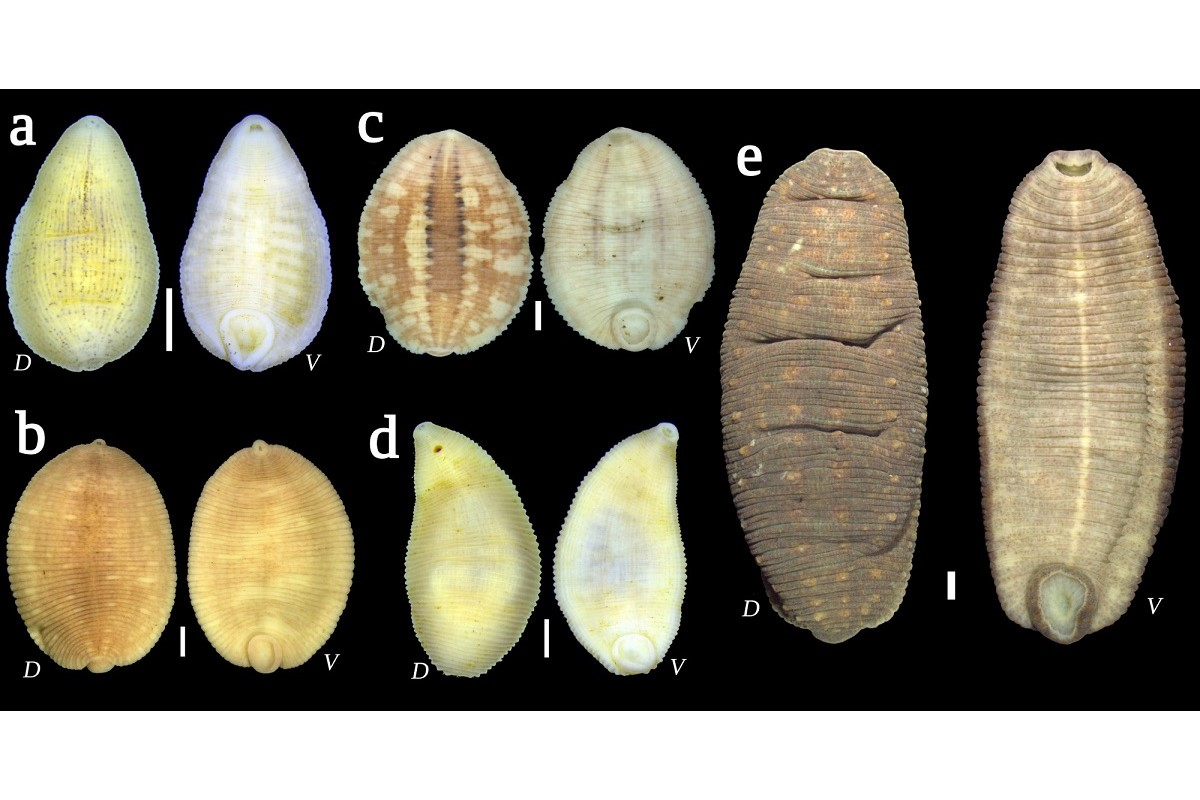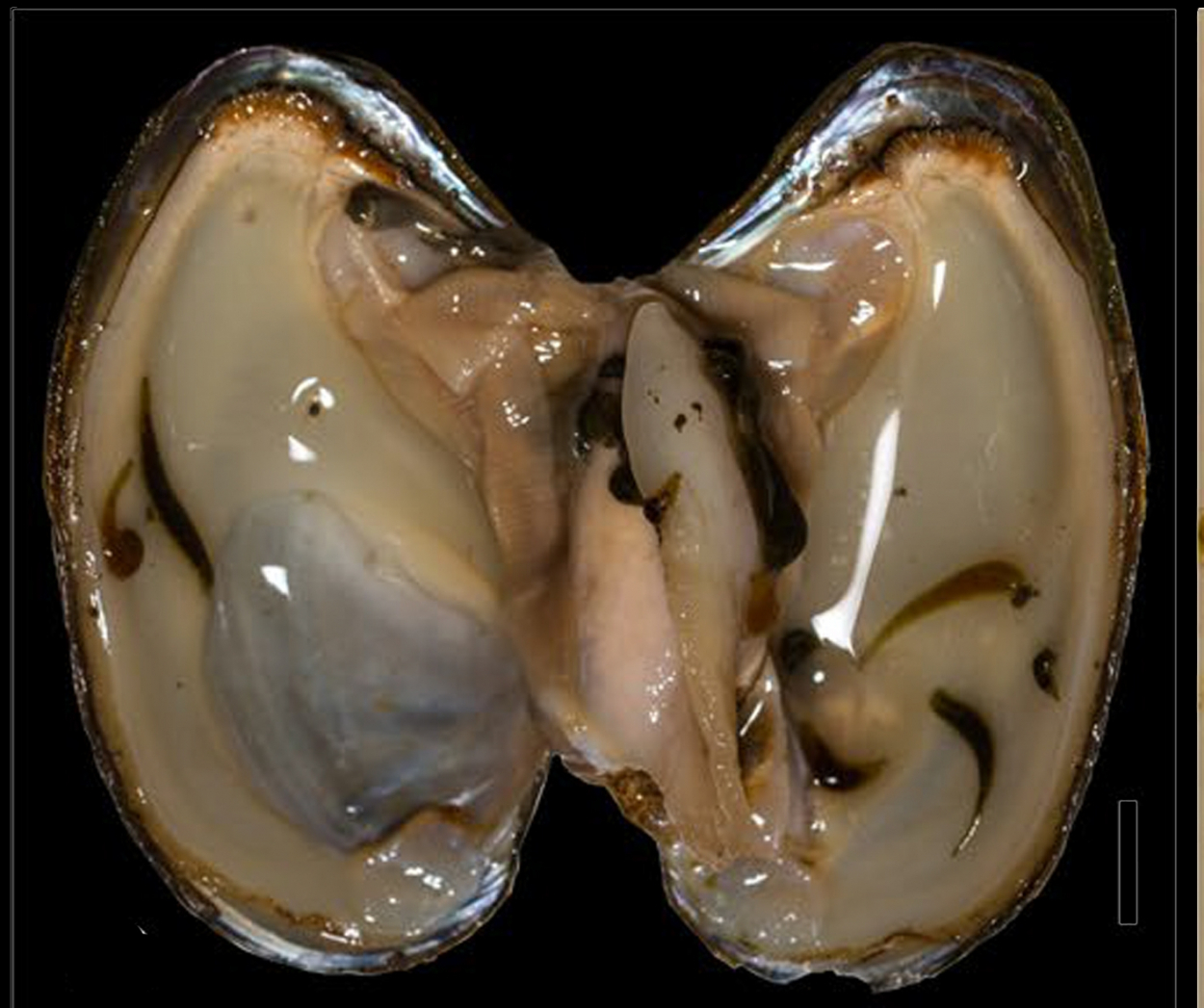Kommersant Nauka: Leeches of the seventieth latitude. What makes Arctic worms get darker?

The deeper we delve into the biological diversity of the Arctic, the better we understand how little the flora and fauna of this region of the Earth have been studied. This is clearly demonstrated by studies in zoology, namely a recent one performed by scientists from Arkhangelsk, St Petersburg, Moscow, and Surgut. They investigated the taxonomic diversity of freshwater leeches in the polar regions.
In 2016, our colleagues Vladimir Pešić and Clemens Grosser, zoologists from the University of Montenegro in Podgorica, discovered and described Glossiphonia balcanica, a new species of the freshwater leech. It was considered to be endemic to the Balkan Peninsula, as indicated by the scientific name of this species. However, to our great surprise, this ’South European endemic’ turned out to be perhaps the most common representative of the Glossiphoniidae family in the Arctic and Subarctic.
A genetic analysis helped us to identify leeches of this species in water bodies of Iceland, the Kola Peninsula, the Polar Urals, the Putorana Plateau, and so forth. In addition, G. balcanica was recorded in the north of the European part of Russia (the Arkhangelsk Region) and in the upper part of the Volga River basin (the Moscow Region). And its habitation in the Balkans suggests that this peninsula once had a refugium (shelter) with the remains of the Quaternary fauna still preserved, while in other regions of Europe these species had died out during the ice age.
The northern origin of this species is also indicated by its ecology. In the Balkans, G. balcanica lives in fast-flowing mountain streams with a much lower temperature than that typical for southern Europe. The species is also known to inhabit the relatively cold Lake Skadar. So, the Balkan leech is by no means endemic to the south of Europe, but a relic, and the Balkans, apparently, can also be considered as a "reserve" of the ice age fauna.
Hardened by the Arctic
Biologists and travellers who are well acquainted with high latitudes have never described them as a "zoological desert". Quite the opposite: those species that were able to penetrate these inhospitable lands and adapt themselves to the conditions existing there, are awarded a kind of ecological "prize". They find themselves in a habitat where the pressure of predators and competitors is greatly relaxed. It means that there is an opportunity to capture a much larger living space than that in the tropics and subtropics, where all ’places under the sun’ have long been divided and a most desperate struggle for existence is going on.
A good example of this kind is provided by the freshwater leeches, a group of animals that has traditionally been considered not very characteristic of the polar regions. In the science of hirudology (that is what the area of zoology dedicated to study of leeches is called, derived from the Latin hirudo), it is believed that in high latitudes these representatives of the subclass Oligochaeta include a very small number of species, occur sporadically and are seldom numerous.
Our research team consisting of experts from research institutes and universities of Arkhangelsk, St Petersburg, Moscow, and Surgut has been dealing with leeches in the Arctic for some years. During this time, our team members have visited many places in the Arctic and subarctic regions not only in Russia, but also in Canada and Alaska. They have assembled quite a representative collection of these creatures, which usually seem unpleasant, if not repulsive, to most non-scientists. Professional zoologists have a completely different opinion here.
Leeches are ancient, interesting and complex animals. They are certainly worthy of study. They are important not only in their own right, but also because they are closely related to their hosts, the animals whose blood leeches consume. These are not only people and large mammals, but also birds, fish, molluscs and even aquatic insect larvae. Studying the origin of arctic leeches and their migration routes in the historical past makes us understand: how the fauna of the Arctic ecosystems was formed in general; what processes influenced its modern appearance; and what "responses" of the ecosystem to current global changes can be expected in the foreseeable future. In other words, leeches help us find answers to many fundamental scientific questions that also have a certain practical significance.
High-tech zoology
Long gone are the days when the classification of animals was made solely "by eye", based on similarities and differences in the shape and colour of their body, size and similar features that are very easy to identify but difficult to assess in terms of their real value. All such signs are very variable, so a strong subjectivity in their interpretation is inevitable. That is why the whole history of scientific zoology is full of endless disputes between professionals on how to correctly distinguish animal species and how they differ from each other. Leeches were no exception in this respect.
Modern zoology is a high-tech science. Experts have not completely abandoned the use of morphological characters, but they now trust the results of genetic analysis much more. Now, the decoded DNA fragments or entire genomes of many organisms are directly compared, which makes it possible to more objectively determine who is related to whom and what degree of kinship it is. This is explained by the fact that genetic traits are much less influenced by the environment. "DNA texts" do not change as much as anatomical and morphological features, and they therefore provide a reliable indicator of kinship and origin.
Moreover, under certain conditions, using these genetic data, you can even try to determine the age of a particular group of animals, expressing it in millions or tens of millions of years (very roughly, not accurately to a year or even a millennium). For leeches and other soft-bodied animals, whose fossil remains are rarely preserved in the geological record, this is especially relevant. And for us it provides an additional opportunity to relate the history of the fauna to the geological events of the past. Calculations of the genetic similarity of organisms today are carried out using hundreds of samples at once. Each of them can be represented by hundreds of nucleotide pairs ("letters" of the genetic text). To process such a large amount of information and build family trees, supercomputer modelling is used.

The northernmost leeches
We have focused so far on one family of leeches, Glossiphoniidae, known as snail leeches, or flat leeches. Having collected an impressive collection of representatives of this group from the water bodies of the Arctic and some areas located to the south, we were able to demonstrate that the actual abundance of Glossiphoniidae species in high latitudes is much larger than it was commonly believed. Our study identified six species and one genus new to science.
In total, 14 species of this family were found in the Arctic water bodies, which is significantly more than the estimates available in science until recently. Some of these species turned out to be "cryptic". These are species that practically do not differ in their external structure and anatomy, but are significantly different genetically. It is almost impossible to detect them not using modern methods of molecular analysis.
Our particular interest was a large leech we assigned to a new genus and species. We gave it the name of Hyperboreomyzon polaris. It can be translated into Engish as a "polar Hyperborean leech". To date, we have only two samples of this worm. One was collected on Kolguev Island, the other on the Putorana Plateau, in the south of Taymyr Peninsula. We have only three specimens of the new species now. The history of the study of leeches in the Russian Arctic began almost two centuries ago, so it is strange that our predecessors did not discover such a large and characteristic leech.
One of the possible explanations is that this species is a relic of the Arctic, it is ancient, very rare and lives only in almost inaccessible areas. Perhaps in future Hyperboreomyzon polaris will be found somewhere in the highlands of Asia, such as the Verkhoyansk Range, the Sayan Mountains, or the Altai Mountains. It is in these mountains that there are "shelters" where other relics of the ice age have been preserved. They probably include the leech we have discovered. The story we told at the beginning, about the ’Balkan’ leech which turned out to be rather Hyperborean in its distribution, also shows that such a scenario is possible.
Glossiphoniidae are champions in yet another respect. The northernmost samples of leeches included in our database were collected at 72° north latitude, near the settlement of Khatanga on the Taymyr Peninsula. Four species of the family reach these high latitudes: Glossiphonia balcanica; G. concolor; G. mollissima; and Helobdella stagnalis. There is still unverified evidence that some species of leeches also inhabit the giant Lake Taymyr, which is even further north, at 74–75° north latitude. In any case, the Taymyr leeches are the northernmost, the "most arctic", representatives of this group on a global scale. This raises a number of interesting questions for researchers about what adaptations they had to develop in order to penetrate so far to the north.
Melanism matters
Perhaps one of these adaptations is the so-called high-latitude melanism, which we first observed in leeches of this family. In general, it is customary to call melanism the presence of dark-coloured forms in the composition of some species. For example, there are black cats and dogs and there are people who are brunettes or even black-skinned, and so on. In several species of snail leeches that we collected in the water bodies of the Arctic, the proportion of such melanistic individuals in the population turned out to be unusually high. Since it was found in more than one species, we cannot speak of a mere chance here. But what makes high-latitude leeches tend to darken in colour? To answer this question, special experimental studies are needed. For now, we can offer only a few hypothetical explanations.
It is known, for example, that in terrestrial and aquatic arthropods, the frequency of occurrence of dark-coloured individuals increases with the latitude and altitude of the area. Apparently, the dark body colour is beneficial in that it absorbs more solar heat, which is useful at high latitudes. It can also protect against ultraviolet radiation, which is advantageous in the mountains. We can suppose that our high-latitude "brunettes" can benefit in the same way. Or are they less noticeable to potential predators in boreal lakes with relatively dark water? We hope that one day this issue will be clarified.
The study of Arctic leeches was supported by the Russian Science Foundation (project № 9-14-00066-П).
Professor Maxim Vinarski, Head of the Laboratory of Macro-Ecology and Biogeography of Invertebrates at St Petersburg University

